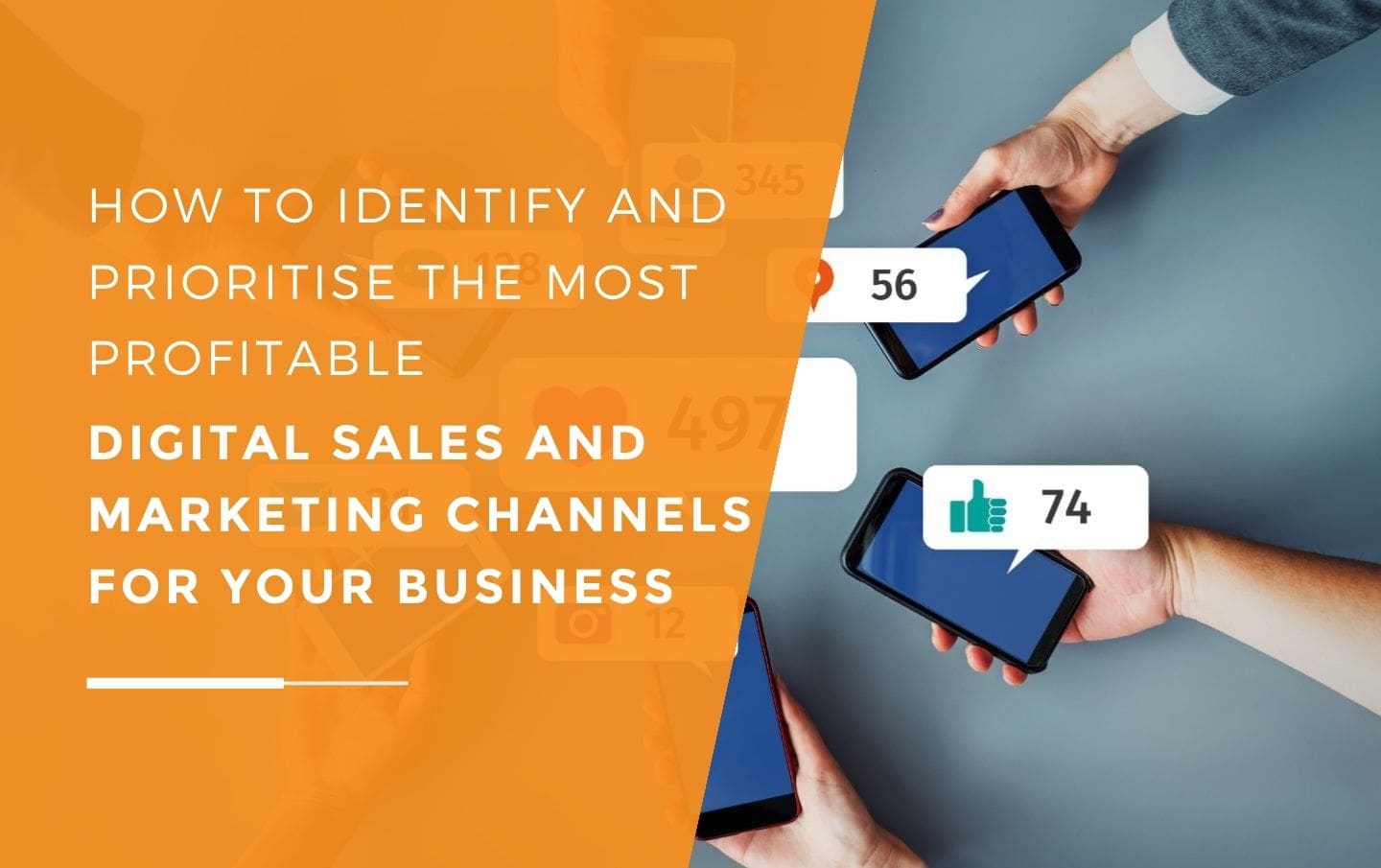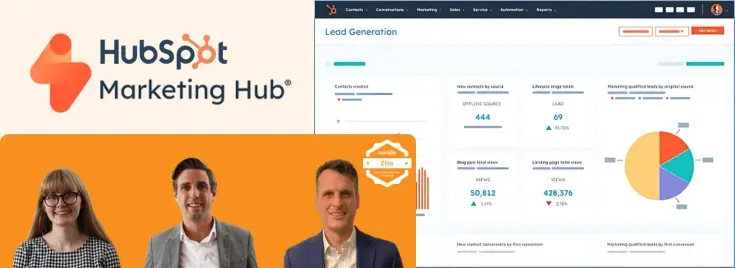What You Don’t Know About Marketing Could Hurt Your Business!
by Leanne Mordue on 31-Jan-2024 00:15:00

SME business owners are a diverse breed, but the one thing that most of them have in common is a burning desire to see their company succeed. As industry specialists, you will have put your sweat, time, and money into your business and developed a vast amount of practical experience and technical knowledge along the way. However, when it comes to marketing and sales, many business owners are less knowledgeable, and this lack of know-how can often severely impact their business’s ability to grow and make sales online.
When it comes to marketing, it’s not just what you know that counts. Lack of understanding in critical areas can result in misdirected marketing campaigns, misallocation of your marketing budget, and your efforts going largely unnoticed by your target audience. In this article, we’ll look at the most common mistakes that business owners make with marketing knowledge that could ultimately hurt their business.
Mistake one: ‘we-ing’ all over your customers
Pick a business website at random, and we can almost guarantee the words that will come up most frequently in the core pages: ‘we’, ‘I’, ‘us’, and so on. This is because of the natural inclination of business owners and their teams to be company-focused. Because they are imbued in the culture and nuts and bolts of their business day in day out, this perspective seeps into the company’s marketing and advertising content. The result is marketing material that talks a lot about the business, its history, personnel, achievements, and qualifications, without ever really touching on the value of the business’s products and services to the customer.
This content can be extremely tiresome to read for anyone outside of the business, and, at best, focuses on the features the business offers, rather than how these benefit the customer. This is a big mistake, because customers don’t buy features; they buy solutions to problems. Your marketing content should focus on the benefits of your products and services in relation to specific pain points, so that your customers can immediately see how you can help them.
Mistake two: assuming that everyone is a potential customer
Another classic mistake that many businesses make is to act as if everyone is a potential customer for their products or services. In reality, not everyone needs or can afford your product or service, as much as you’d like this to be true. Okay, the majority of business owners know this on paper. They instinctively know the type of customer who is most likely to buy, and what messages are going to get prospects leaning forwards to find out more, but despite this a lot of SME marketing content only promotes their products and services in a very general and vague way. The content talks to a general audience and not a specific reader – which actually reduces the pool of people that your content is likely to resonate with. A more cost-effective approach is to identify a small group of ideal customers and to tailor your marketing efforts towards them. This involves thorough market research to understand their pain points, their values, purchase motivations, and buying habits. By targeting a specific niche audience in this way, you can increase the effectiveness of your marketing campaigns while reducing costs.
Mistake three: failing to measure your success
Marketing without carefully quantifying your success is like shooting in the dark and hoping for the best. Without careful attention to marketing data, you simply won’t know which campaigns and content strategies are working and which ones are falling flat. This can result in wasted resources and missed opportunities. Fortunately, modern inbound marketing platforms, such as HubSpot, and free to use analytics tools like Google Analytics, make it fast and straightforward to measure a variety of metrics related to success or failure, including engagement, conversion rate, bounce rate, social shares etc. Understanding this data helps you make better informed decisions and also gives you more accurate insight into the customer journey, allowing you to optimise your marketing efforts at each stage for better results.
The hidden cost of these mistakes
The cost of not being aware of these common marketing errors goes beyond missed opportunities and a disappointing ROI. Marketing faux pas can also hurt your brand reputation, dilute your core messages, and even lose you customers. A hit and miss approach to marketing can also incur unnecessary expenses, such as investing in content that doesn’t resonate with your audience, wasting time on social media campaigns that don’t work, spending more than you have to on PPC, and missing out on potential customers who simply don’t know about your business.
The value of working with a specialist agency
So now for the million-dollar question. What’s the best way for business owners to dodge these errors and obtain the results they need from marketing? Realistically, most business owners don’t have the time, resources, or inclination to acquire the specialist knowledge and training necessary to deliver an effective and profitable marketing strategy, keep up with changing trends and technologies, and invest in the required in-house resources to implement the strategy. There simply aren’t enough hours in the day, and life is short. A more cost-effective solution is to work with a specialist agency partner, such as JDR.
Partnering with an agency gives you access to the knowledge, resources, and technologies you need to maximise the value of your marketing budget, right out of the box, and also the insight to avoid potentially expensive and embarrassing oversights that could be draining you money.
Find out more
To find out more about inbound marketing and how to optimise your marketing efforts for the best results, please get in touch with one of the specialists at JDR today by clicking here.
Image Source: Canva
- Inbound Marketing (SEO, PPC, Social Media, Video) (824)
- Strategy (363)
- Sales & CRM (195)
- Marketing Automation & Email Marketing (190)
- Business Growth (164)
- Website Design (160)
- Hubspot (138)
- Lead Generation (115)
- Google Adwords (98)
- Content Marketing (94)
- Conversion (48)
- Case Studies (47)
- News (47)
- Ecommerce (39)
- Webinars (34)
- SEO (24)
- AI (20)
- Events (19)
- Video (17)
- LinkedIn Advertising (15)
- Video Selling (15)
- Software training (13)
- Niche business marketing (11)
- The Digital Prosperity Podcast (10)
- Facebook Advertising (6)
- HubSpot Case Studies (5)
- December 2025 (10)
- November 2025 (6)
- October 2025 (17)
- September 2025 (16)
- August 2025 (14)
- July 2025 (14)
- June 2025 (5)
- May 2025 (19)
- April 2025 (15)
- March 2025 (13)
- February 2025 (13)
- January 2025 (8)
- December 2024 (2)
- November 2024 (4)
- October 2024 (21)
- September 2024 (4)
- August 2024 (8)
- July 2024 (14)
- June 2024 (16)
- May 2024 (25)
- April 2024 (15)
- March 2024 (18)
- February 2024 (5)
- January 2024 (10)
- December 2023 (6)
- November 2023 (10)
- October 2023 (13)
- September 2023 (12)
- August 2023 (14)
- July 2023 (13)
- June 2023 (14)
- May 2023 (15)
- April 2023 (13)
- March 2023 (14)
- February 2023 (13)
- January 2023 (15)
- December 2022 (13)
- November 2022 (6)
- October 2022 (8)
- September 2022 (22)
- August 2022 (15)
- July 2022 (13)
- June 2022 (16)
- May 2022 (14)
- April 2022 (16)
- March 2022 (17)
- February 2022 (11)
- January 2022 (8)
- December 2021 (6)
- November 2021 (7)
- October 2021 (11)
- September 2021 (10)
- August 2021 (7)
- July 2021 (7)
- June 2021 (4)
- May 2021 (4)
- April 2021 (1)
- March 2021 (3)
- February 2021 (5)
- January 2021 (4)
- December 2020 (7)
- November 2020 (6)
- October 2020 (5)
- September 2020 (9)
- August 2020 (18)
- July 2020 (17)
- June 2020 (17)
- May 2020 (10)
- April 2020 (21)
- March 2020 (24)
- February 2020 (21)
- January 2020 (12)
- December 2019 (23)
- November 2019 (12)
- October 2019 (14)
- September 2019 (16)
- August 2019 (15)
- July 2019 (13)
- June 2019 (6)
- May 2019 (8)
- April 2019 (4)
- March 2019 (2)
- February 2019 (2)
- January 2019 (2)
- December 2018 (3)
- November 2018 (24)
- September 2018 (11)
- August 2018 (9)
- June 2018 (3)
- May 2018 (6)
- April 2018 (14)
- March 2018 (12)
- February 2018 (16)
- January 2018 (15)
- December 2017 (15)
- November 2017 (18)
- October 2017 (23)
- September 2017 (19)
- August 2017 (28)
- July 2017 (27)
- June 2017 (25)
- May 2017 (18)
- April 2017 (17)
- March 2017 (16)
- February 2017 (17)
- January 2017 (14)
- December 2016 (21)
- November 2016 (27)
- October 2016 (25)
- September 2016 (16)
- August 2016 (20)
- July 2016 (19)
- June 2016 (14)
- May 2016 (20)
- April 2016 (24)
- March 2016 (22)
- February 2016 (28)
- January 2016 (27)
- December 2015 (28)
- November 2015 (19)
- October 2015 (9)
- September 2015 (12)
- August 2015 (5)
- July 2015 (1)
- June 2015 (10)
- May 2015 (3)
- April 2015 (11)
- March 2015 (14)
- February 2015 (15)
- January 2015 (12)
- December 2014 (2)
- November 2014 (23)
- October 2014 (2)
- September 2014 (2)
- August 2014 (2)
- July 2014 (2)
- June 2014 (7)
- May 2014 (14)
- April 2014 (14)
- March 2014 (7)
- February 2014 (2)
- January 2014 (7)
- December 2013 (9)
- November 2013 (14)
- October 2013 (17)
- September 2013 (3)
- August 2013 (6)
- July 2013 (8)
- June 2013 (4)
- May 2013 (3)
- April 2013 (6)
- March 2013 (6)
- February 2013 (7)
- January 2013 (5)
- December 2012 (3)
- November 2012 (2)
- September 2012 (1)
Subscribe by email
You May Also Like
These Related Blogs

How To Identify And Prioritise The Most Profitable Digital Sales And Marketing Channels For Your Business
The Internet is a wide-open landscape when it comes to making sales for your business.

Replay: Drive Growth With HubSpot Marketing Hub (Professional)
Drive Growth With HubSpot Marketing Hub (Professional) - JDR Business Growth Webinar Series Join Andy Gibbins, Emma Ablewhite and Andrew Leamon from t …

Overcoming SME Growth Challenges Through Inbound Marketing
The Catch-22 facing SME business owners when it comes to growth is that you need resources to grow, and resources are the thing that small businesses …




